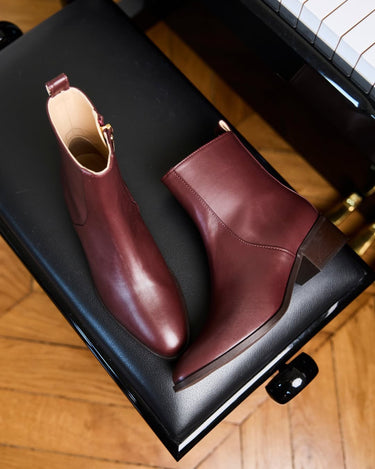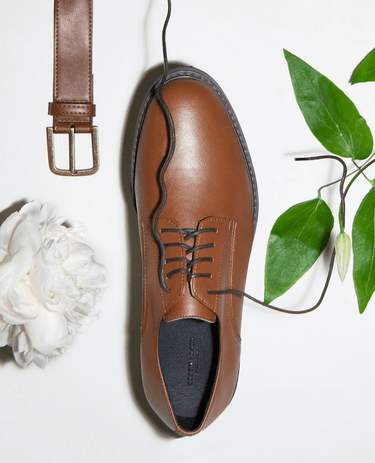Is Vegan Leather Just Plastic?
There's no denying that vegan leather is all the rage. Luxury brands are working with vegan alternatives, plant-based leathers are on the rise, and the industry is fawning over leathers made from mushrooms, pineapples, grapes and cactus. But the rise of animal-free materials has brought up a question: is vegan leather just plastic?
By Sascha Camilli: writer, speaker, activist, and vegan fashion expert.
Why is plastic pollution a fashion issue?
The answer is complicated, but it's crucial to understand the concerns behind plastic pollution. An estimated 60% of all clothes in the world are made from human-made synthetic materials, including the most commonly used synthetic: polyester. The production of these materials is highly taxing on the environment, polluting soil and water, and emitting greenhouse gases. When washed, synthetic garments also release microplastics into waterways. So plastic pollution in fashion is definitely a problem. But let's keep in mind that these materials aren't exclusively worn by vegans. Most people, if not all people in the Western world, wear synthetics in some form. Plastic pollution in fashion is far from a vegan-only issue.

What is vegan leather made of?
There is a variety of materials that can be used to make vegan leather. Traditionally yes, most faux leathers were made using either the highly toxic petroleum-derived material PVC, or the less toxic yet still harmful polyurethane (PU). Both of these are indeed a form of plastic. But things have changed - today's vegan leathers are made from plant-based fibres that contain significantly fewer synthetics.
What is plant-based vegan leather?
With the rising environmental awareness in the fashion industry, we've seen the arrival of more planet-conscious leathers that are made from plants. The most commonly used plant leather is made from pineapples in the Philippines - Ananas Anam's Piñatex material, which has been used by Chanel, H&M and Hugo Boss. One of the hottest up-and-coming vegan leathers is Desserto's cactus leather, made from the nopal cactus which grows in Mexico. This material is made from an organic cactus formula on a backing crafted from recycled polyester and recycled cotton. A material popular with ethical and vegan fashion brands is apple leather, which is created using leftovers from the apple juicing industry - apple waste is dehydrated and spread on a canvas to create this leather. Other alternatives include leather made from wine grapes, mushrooms, and cork.

Does vegan leather contain plastic?
The aforementioned plant-based leathers contain much less plastic than the 100% PU or PVC faux leathers of the past. Indeed, some of them can be made with an up to 90% fruit content. Some of the slow-fashion material innovation companies behind these textiles are working on replacing the polyurethane backing with fibres like bio-based resins, and some, like Desserto, use recycled plastics for their backing. But none of these leathers is in fact plastic-free. However, let's remember that neither is animal leather, which is often coated in plastic for preservation.
Can vegan leather ever be plastic-free?
Indeed it can. Treekind, ideated by natural material company Biophilica, is made from urban plant waste, as well as agricultural and forestry waste. It uses only 1% of the water that animal leather production would use and is entirely vegan. No formaldehyde or pesticides are used in its production. While Treekind is still in the development stages, another plant leather is currently already on the market. US-based company Natural Fiber Welding has developed MIRUM, a fully plant-based leather crafted from plant waxes and oils welded together. The main components of this material are biodegradable polymers and it contains no synthetic binders. Unlike many other vegan leathers, it has no polyurethane coating. Brands such as SENTIENT, Melina Bucher and Svala all work with this miracle material, which offers the resistance and durability of conventional leathers, but is much kinder to the planet.
So, the answer to the question "is vegan leather just plastic?" is complicated. Vegan leather is many things, and the innovation involved in it means that new developments are moving further away from plastic. The future of fashion is vegan - and increasingly plastic-free.
By Sascha Camilli
About Sascha
Sascha Camilli is a vegan fashion writer, speaker and activist. Her book Vegan Style is out now on Murdoch Books. For more about Sascha, you can read our interview with her or read her newsletter Kind of Wild. You can also follow her on Instagram, Twitter and LinkedIn.
Cover image by pure by luce
For more great content like this in your inbox, sign up to our newsletter, and save 10% off your next purchase, plus great savings throughout the year.
Related Articles

Vegan Christmas Gifts For Him

Vegan Christmas Gifts For Her
















































































































